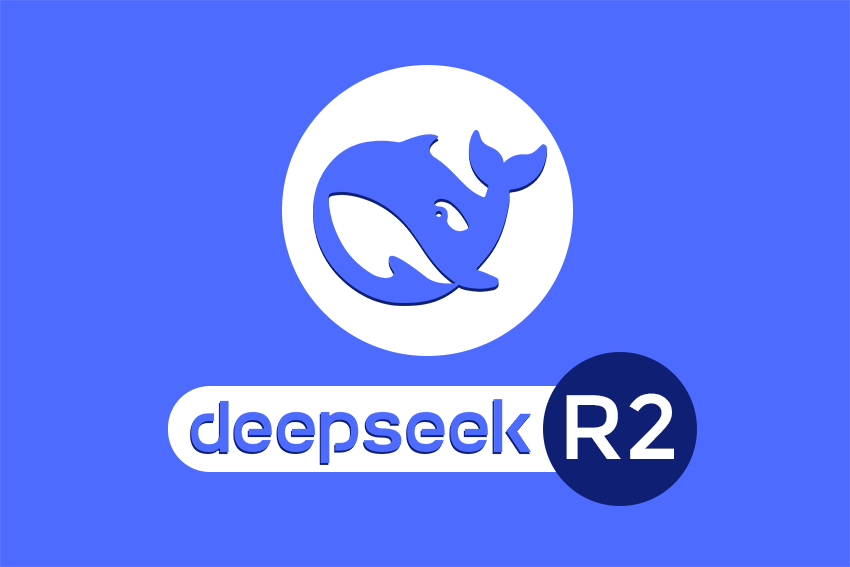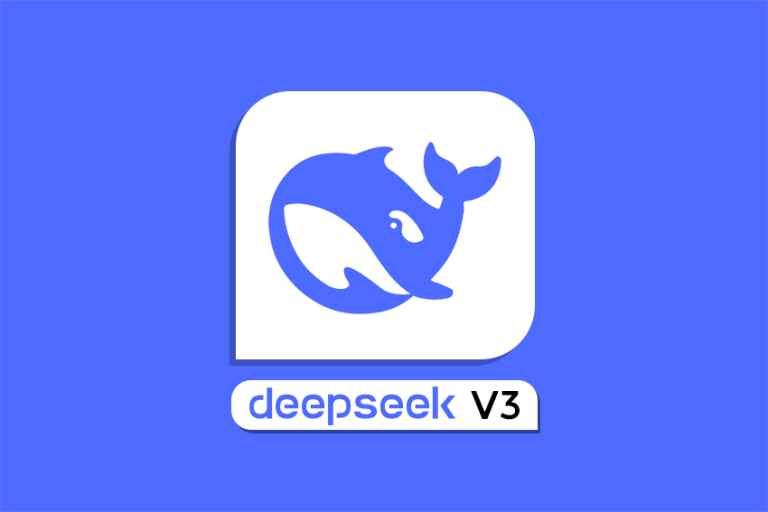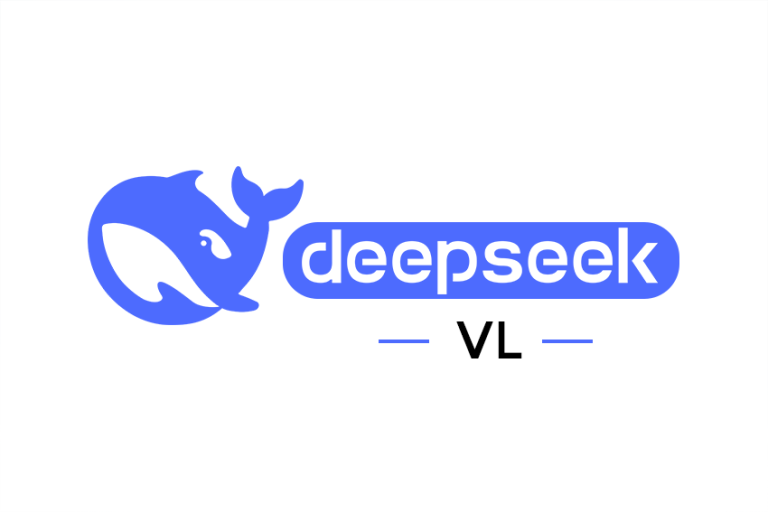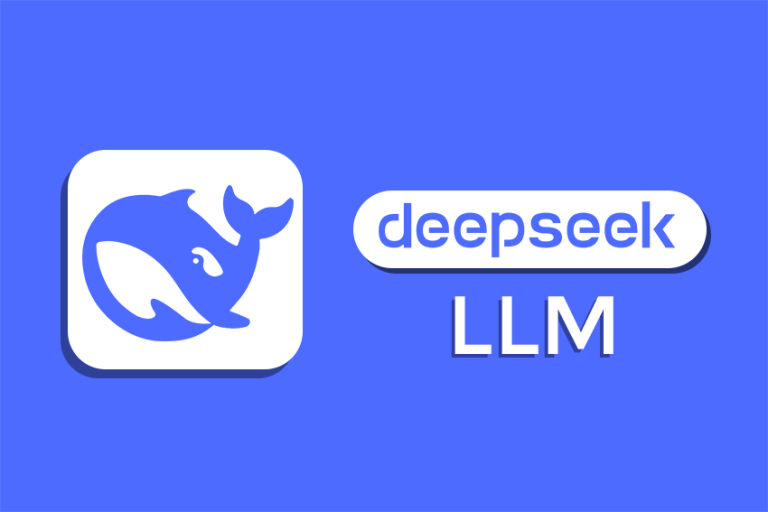The world of artificial intelligence is evolving at an unprecedented pace, and one of the latest breakthroughs making headlines is DeepSeek R2. This cutting-edge AI model, developed by the Chinese startup DeepSeek Chat, is poised to revolutionize the industry with its enhanced reasoning capabilities, advanced coding skills, and multilingual support.
DeepSeek first gained global recognition with the launch of its R1 model in January 2025, which stunned the industry by outperforming many Western alternatives at a fraction of the cost. This led to a $1 trillion sell-off in global stock markets, demonstrating the disruptive potential of DeepSeek’s AI innovations. Now, the company is accelerating the release of DeepSeek R2, originally planned for May 2025, to solidify its position as a leader in AI development.
As DeepSeek R2 prepares for its highly anticipated debut, industry experts speculate that it could reshape the competitive landscape, challenging dominant AI players like OpenAI and Google. But what makes DeepSeek R2 unique, and how does it compare to its predecessor and other AI models? This article provides an in-depth look at everything you need to know about DeepSeek R2, from its key improvements to its potential impact on the global AI ecosystem.
What is DeepSeek R2?
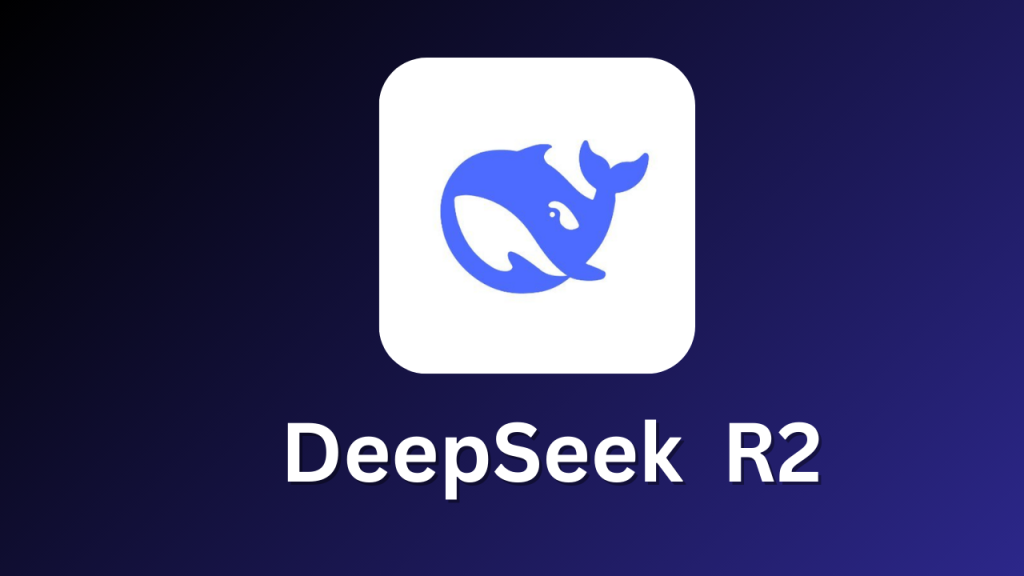
DeepSeek R2 is the highly anticipated successor to DeepSeek R1, an advanced AI reasoning model that gained global attention for its efficiency and performance. Developed by the Chinese AI startup DeepSeek, R2 aims to push the boundaries of artificial intelligence by offering enhanced coding capabilities, multilingual reasoning, and improved computational efficiency.
Unlike traditional AI models that require massive computational resources, DeepSeek has distinguished itself by developing cost-effective models that rival industry leaders like OpenAI’s ChatGPT and Google’s Gemini. The first version, DeepSeek R1, demonstrated exceptional reasoning abilities despite being built with less-powerful Nvidia chips, proving that innovation does not necessarily require excessive computational expenses.
With DeepSeek R2, the company is taking its AI advancements even further. The model is designed to excel in complex programming tasks, understand and generate responses in multiple languages beyond English, and offer improved logical reasoning, making it a powerful tool for developers, businesses, and researchers.
Moreover, DeepSeek R2 is expected to be a multimodal model, meaning it could process not just text but also images, audio, and possibly even video, making it a more versatile AI system. The details about its exact architecture remain undisclosed, but industry insiders suggest it will feature expanded reinforcement learning (RL) training datasets, leading to more sophisticated reasoning and problem-solving capabilities.
The rapid acceleration of DeepSeek R2’s release schedule highlights the company’s ambition to dominate the AI industry. Originally slated for a May 2025 release, reports indicate that DeepSeek is fast-tracking the launch to capitalize on the momentum generated by R1 and maintain its competitive edge.
As the world waits for the official launch, one question remains: how much better will DeepSeek R2 be compared to its predecessor?
Key Improvements in DeepSeek R2 Over R1
DeepSeek R2 is not just an incremental update; it represents a significant leap forward in AI technology. While DeepSeek R1 stunned the world with its exceptional reasoning abilities at a lower cost, R2 aims to refine and expand these capabilities, making it even more powerful. Below are the major improvements that set DeepSeek R2 apart from its predecessor.
1. Enhanced Coding and Programming Capabilities
One of the most notable upgrades in DeepSeek R2 is its ability to handle more complex programming tasks. Unlike R1, which was already proficient in code generation and debugging, R2 introduces:
- Better syntax comprehension for multiple programming languages.
- More efficient debugging and refactoring tools for developers.
- Advanced code completion and generation, making it a serious competitor to AI-powered coding tools like GitHub Copilot and OpenAI Codex.
2. Multilingual Reasoning Beyond English
DeepSeek R1 primarily excelled in English-language reasoning, but R2 is designed to think and process multiple languages fluently. This improvement is particularly important for:
- Global AI adoption, allowing users worldwide to leverage DeepSeek’s capabilities.
- Better contextual understanding in non-English texts.
- Improved translation and localization for international applications.
3. Expanded Reinforcement Learning for Smarter AI
Reports suggest that DeepSeek R2 has undergone reinforcement learning (RL) with a much larger dataset compared to R1. This enhancement leads to:
- More logical and human-like reasoning when generating responses.
- Better adaptation to complex problem-solving in diverse scenarios.
- Reduced biases and improved decision-making compared to earlier AI models.
4. More Efficient AI Model Architecture
One of the biggest advantages of DeepSeek R1 was its ability to deliver top-tier performance while using less-powerful Nvidia chips. DeepSeek R2 takes this efficiency even further by:
- Implementing Mixture-of-Experts (MoE) to optimize processing power.
- Using Multihead Latent Attention (MLA) for better contextual understanding.
- Reducing computational costs while maintaining high accuracy, making R2 up to 40 times cheaper to run than competitors like GPT-4.
5. Multimodal Capabilities (Potentially Processing Images, Audio, and Video)
While DeepSeek R1 was primarily a text-based model, there is speculation that DeepSeek R2 could introduce multimodal capabilities. This means the model could potentially process and generate insights from:
- Images and visual data (similar to OpenAI’s DALL·E and Google’s Gemini).
- Audio inputs, allowing for AI-driven speech recognition and generation.
- Video understanding, making it useful for content analysis and media applications.
6. Faster and More Accessible Deployment
DeepSeek has gained recognition for its cost-effective AI models, and R2 is expected to be more widely available than R1. The model’s efficiency means:
- Lower operational costs for businesses using AI.
- More affordable API pricing, making it accessible to startups and developers.
- Faster response times, improving user experience for real-time applications.
Why These Improvements Matter
The upgrades in DeepSeek R2 highlight a clear ambition: to compete with and potentially surpass AI leaders like OpenAI and Google. By enhancing coding, reasoning, efficiency, and multimodal processing, DeepSeek R2 positions itself as a powerful, cost-effective AI model capable of reshaping the industry.
With these improvements in place, how exactly does DeepSeek R2 work? Let’s explore the technology behind its AI architecture in the next section.
How Does DeepSeek R2 Work?
DeepSeek R2 builds upon the efficiency and cost-effective architecture of its predecessor, introducing enhanced AI reasoning, advanced neural networks, and optimized machine learning techniques. Unlike traditional AI models that rely on brute-force computing power, DeepSeek R2 leverages intelligent resource allocation to deliver high performance at a lower computational cost.
Let’s break down how DeepSeek R2 functions and what makes it unique.
1. Reinforcement Learning with Expanded Datasets
DeepSeek R2 is trained using reinforcement learning (RL) on an expanded dataset, allowing it to make better decisions and improve over time. This involves:
- Reward-based learning, where the model optimizes itself by learning from past interactions.
- Larger and more diverse datasets than those used in R1, ensuring more accurate reasoning and reduced biases.
- Human feedback integration, similar to OpenAI’s RLHF (Reinforcement Learning from Human Feedback), but reportedly with greater emphasis on non-English languages.
2. Mixture-of-Experts (MoE) for Optimized Performance
One of DeepSeek’s key innovations is the use of Mixture-of-Experts (MoE), an architecture that activates only the most relevant parts of the model for any given task. This results in:
- Faster processing speeds, since only necessary computations are performed.
- Lower energy consumption, making it more eco-friendly and cost-efficient.
- Scalability, allowing DeepSeek R2 to handle complex tasks without the excessive computing demands of traditional AI models.
3. Multihead Latent Attention (MLA) for Better Contextual Understanding
DeepSeek R2 integrates Multihead Latent Attention (MLA), an advanced attention mechanism that:
- Processes multiple aspects of a query simultaneously, improving response accuracy.
- Enhances understanding of long-form content, making it ideal for reasoning-heavy applications.
- Reduces common AI errors, such as hallucinations (generating false or misleading information).
4. Lower Computational Requirements Without Sacrificing Performance
A major differentiator for DeepSeek is its ability to compete with AI giants like OpenAI and Google while using less powerful GPUs.
- DeepSeek R1 was built using Nvidia A100 chips, avoiding reliance on high-end hardware like Nvidia H100 (which is restricted for export to China).
- DeepSeek R2 is expected to be even more efficient, possibly using a mix of locally available chips and optimized neural networks.
- This approach enables wider adoption at a lower cost, making R2 up to 40 times cheaper to run than similar Western models.
5. Multimodal Potential: Beyond Just Text-Based AI
While R1 was a text-based AI model, DeepSeek R2 is rumored to introduce multimodal processing capabilities. This means the model could potentially handle:
- Text (standard chatbot and reasoning tasks).
- Images (AI-powered image recognition, similar to OpenAI’s DALL·E).
- Audio processing (speech recognition and synthesis).
- Video analysis (AI-assisted content moderation and video understanding).
If DeepSeek R2 successfully integrates multimodal capabilities, it could become a direct competitor to OpenAI’s GPT-4 Turbo and Google’s Gemini AI models.
The Bottom Line: Why DeepSeek R2’s Technology Matters
DeepSeek R2’s architecture and efficiency-driven design set it apart from traditional AI models. By using reinforcement learning, MoE, and MLA, it reduces costs while improving accuracy, making AI more accessible to businesses and developers worldwide.
With an understanding of how DeepSeek R2 works, let’s explore its core features and what makes it stand out in the next section.
Core Features of DeepSeek R2
DeepSeek R2 introduces a range of powerful enhancements that make it one of the most efficient and advanced AI models to date. From coding improvements to multilingual reasoning and cost-efficient AI architecture, here are the standout features that set DeepSeek R2 apart from its competitors.
1. Advanced Coding Capabilities
DeepSeek R2 takes AI-assisted coding to the next level, making it a strong alternative to tools like GitHub Copilot and OpenAI Codex. Key improvements include:
- More accurate code generation across multiple programming languages.
- Improved debugging with AI-driven error detection and fixes.
- Code optimization and refactoring, helping developers write cleaner and more efficient code.
- Support for complex programming tasks, making it useful for software engineers, data scientists, and automation specialists.
2. Multilingual Reasoning and Language Expansion
Unlike DeepSeek R1, which primarily excelled in English, DeepSeek R2 is expected to support multiple languages fluently. This allows the model to:
- Understand and generate content in diverse languages, making it useful for global applications.
- Improve contextual accuracy for non-English users.
- Enhance translation quality, competing with AI models like Google Translate and DeepL.
3. Cost-Effective AI with Lower Computational Requirements
One of DeepSeek’s biggest strengths is its ability to deliver high performance without requiring expensive GPU hardware. DeepSeek R2 builds on this efficiency by:
- Reducing the cost of AI deployment by up to 40 times compared to OpenAI’s GPT models.
- Optimizing AI workloads using Mixture-of-Experts (MoE) and Multihead Latent Attention (MLA) to improve efficiency.
- Using lower-cost GPUs, making it accessible to businesses and developers in countries with hardware limitations.
4. Faster Processing and Response Time
DeepSeek R2 is expected to offer significantly improved processing speed, meaning:
- Reduced latency for real-time AI applications such as chatbots, virtual assistants, and automation tools.
- More efficient API usage, allowing developers to integrate the model into applications with lower costs.
- Scalability, making it a viable option for enterprises looking for fast and reliable AI solutions.
5. Potential Multimodal Capabilities
Industry insiders speculate that DeepSeek R2 may introduce multimodal support, meaning it could process text, images, and audio. If true, this would allow it to:
- Analyze and generate images similar to DALL·E or Midjourney.
- Perform speech-to-text and text-to-speech functions, competing with Whisper AI and Google Voice AI.
- Handle video understanding, potentially assisting in AI-driven content moderation.
6. Reinforcement Learning for Smarter AI Interactions
DeepSeek R2 has been trained on a much larger dataset than R1, using reinforcement learning to improve reasoning and decision-making. This allows the model to:
- Adapt better to user queries, making conversations feel more natural.
- Reduce AI biases, leading to more accurate and ethical responses.
- Enhance logical thinking, making it more useful for research and complex problem-solving.
Why These Features Matter
DeepSeek R2 is shaping up to be one of the most powerful and cost-efficient AI models available. Its coding expertise, multilingual support, and improved efficiency make it an attractive alternative to Western AI models.
With these advanced features, DeepSeek R2 is set to disrupt the industry. But what makes it a true game-changer? Let’s explore its impact on AI and why it matters in the next section.
Why is DeepSeek R2 a Game-Changer?
DeepSeek R2 is more than just another AI model—it represents a major shift in the artificial intelligence landscape. With its cost-effective architecture, advanced reasoning capabilities, and geopolitical implications, DeepSeek R2 is disrupting the industry in ways that extend beyond technology alone.
Here’s why DeepSeek R2 is considered a game-changer in AI development.
1. High Performance at a Lower Cost
One of the biggest criticisms of Western AI models like GPT-4 and Google’s Gemini is their high operational costs, requiring massive computational power. DeepSeek R2 challenges this by:
- Delivering AI performance at a fraction of the cost, making it more accessible to businesses and developers.
- Using optimized computing resources, reducing the need for expensive hardware like Nvidia H100 GPUs.
- Potentially influencing the AI market to lower costs globally, forcing competitors to rethink their pricing strategies.
2. Breaking the Western AI Monopoly
For years, companies like OpenAI, Google, and Meta have dominated the AI space. DeepSeek R2 is disrupting this balance by:
- Providing an alternative to Western AI models, increasing competition.
- Allowing Chinese companies to develop AI independently, reducing reliance on U.S.-based technologies.
- Spurring global innovation, as more AI companies look to build efficient, cost-effective alternatives.
3. Multilingual AI for a Global Audience
Most AI models, including GPT-4, perform best in English and struggle with other languages. DeepSeek R2 is designed to natively support multiple languages, meaning:
- Better AI accessibility for non-English speakers.
- Higher-quality translations compared to previous AI models.
- Stronger adoption in markets outside of the U.S., making AI more universally available.
4. Strengthening China’s AI Leadership
DeepSeek’s rapid rise has positioned China as a serious competitor in AI research. The launch of DeepSeek R2 could:
- Push China ahead in the global AI race, challenging the U.S. and Europe.
- Encourage more investment in Chinese AI companies, further accelerating innovation.
- Prompt U.S. policymakers to impose additional tech restrictions, escalating the U.S.-China tech rivalry.
5. Open-Source and API Accessibility
DeepSeek has already disrupted the AI industry with low-cost API access for R1. With DeepSeek R2, the company is expected to:
- Offer competitive API pricing, making it easier for developers to integrate AI into their applications.
- Possibly open-source some AI models, increasing transparency and fostering community-driven development.
- Encourage businesses to switch from expensive Western AI solutions, leading to a wider adoption of DeepSeek AI.
The Bigger Picture: A Global AI Shift
The rise of DeepSeek R2 signals a fundamental shift in the AI industry. By providing high-quality AI at lower costs, DeepSeek is reshaping the competitive landscape, forcing industry leaders to rethink their strategies.
But with great power comes great challenges—DeepSeek R2 is facing technical, geopolitical, and ethical hurdles that could impact its global success.
In the next section, we’ll explore the key challenges DeepSeek R2 must overcome.
Challenges Facing DeepSeek R2
While DeepSeek R2 is poised to revolutionize the AI industry, its success is not without obstacles. From technical limitations to geopolitical tensions, several factors could impact its widespread adoption.
Here are the key challenges facing DeepSeek R2:
1. U.S. Sanctions and AI Chip Restrictions
One of the biggest threats to DeepSeek R2’s growth is U.S. export restrictions on AI chips. The Biden administration has imposed limits on the sale of high-end Nvidia GPUs, such as:
- Nvidia A100 and H100 chips, which are critical for training advanced AI models.
- Stricter regulations on AI hardware exports, making it harder for Chinese companies to access cutting-edge technology.
- Potential new restrictions, as DeepSeek’s success could prompt further U.S. government intervention.
Although DeepSeek R1 was trained using less-powerful Nvidia chips, it remains unclear how DeepSeek R2 will adapt to these restrictions.
2. Privacy and Regulatory Concerns
Several countries have raised privacy concerns about AI models trained on large datasets, including DeepSeek’s systems. Issues include:
- Data security risks, especially when AI models store and process sensitive information.
- Bans and restrictions, with South Korea and Italy already removing DeepSeek from app stores over privacy concerns.
- Increased AI regulation, as governments introduce new laws to control AI development and usage.
To compete globally, DeepSeek may need to comply with stricter international privacy standards, similar to GDPR in Europe.
3. Competition from Western AI Giants
Despite its cost-effective architecture, DeepSeek R2 will have to compete with established AI leaders like:
- OpenAI (ChatGPT & GPT-4 Turbo)
- Google (Gemini AI models)
- Anthropic (Claude AI)
These companies have larger funding, better infrastructure, and stronger partnerships, making it difficult for DeepSeek to gain market share outside China.
4. Potential Censorship and Government Oversight
While DeepSeek is backed by the Chinese government, it could also face challenges due to state control, such as:
- Censorship policies, limiting what the AI model can generate.
- Restricted international collaborations, reducing the model’s ability to improve using external research.
- Government-imposed limits on AI openness, potentially affecting transparency.
For DeepSeek R2 to succeed on a global scale, it may need to navigate China’s strict AI regulations while maintaining international appeal.
5. Trust and Adoption in Global Markets
Western businesses and developers may be hesitant to adopt DeepSeek R2 due to:
- Concerns over AI security and data handling.
- Fear of reliance on Chinese technology, especially amid growing tensions between China and the West.
- Lack of trust in long-term support, as Chinese AI models may face sanctions or restrictions.
Can DeepSeek Overcome These Challenges?
Despite these hurdles, DeepSeek R2 has already proven itself as a major disruptor. If it can:
✅ Navigate U.S. chip restrictions
✅ Address privacy concerns
✅ Expand into global markets
Then it has the potential to reshape the AI industry and compete on a global scale.
In the next section, we’ll compare DeepSeek R2 to its Western competitors like OpenAI and Google.
DeepSeek R2 vs. Western AI Models
As DeepSeek R2 prepares for launch, a major question arises: How does it compare to AI models from Western tech giants like OpenAI and Google?
To answer this, let’s analyze DeepSeek R2 against its biggest competitors—GPT-4 Turbo (OpenAI) and Gemini (Google)—based on key AI performance metrics.
1. Performance and Reasoning Capabilities
| Feature | DeepSeek R2 | GPT-4 Turbo (OpenAI) | Gemini 1.5 (Google) |
|---|---|---|---|
| Reasoning Ability | Strong, improved from R1 | Strong, excels in complex logic | Strong, multimodal reasoning |
| Multilingual Support | Expected to outperform R1 | Supports multiple languages but better in English | Strong language support but still English-dominant |
| Programming Assistance | Advanced code generation and debugging | Powerful coding abilities via ChatGPT | Code generation but less refined than OpenAI |
➡ Verdict: While GPT-4 Turbo currently leads in logical reasoning, DeepSeek R2 is closing the gap, especially with its expected multilingual support.
2. AI Model Efficiency and Cost
| Feature | DeepSeek R2 | GPT-4 Turbo (OpenAI) | Gemini 1.5 (Google) |
|---|---|---|---|
| Hardware Efficiency | Uses cost-effective AI architecture | Requires high-end Nvidia GPUs | Requires high-end TPUs |
| Operational Cost | Up to 40x cheaper than competitors | Expensive cloud-based AI | High computational costs |
| API Pricing | Expected to be cheaper | Higher pricing for API access | Expensive API model |
➡ Verdict: DeepSeek R2’s lower cost gives it a significant advantage, making AI more affordable for businesses and developers.
3. Geopolitical and Market Challenges
| Factor | DeepSeek R2 | GPT-4 Turbo (OpenAI) | Gemini 1.5 (Google) |
|---|---|---|---|
| Regulatory Risks | Faces U.S. chip export bans, privacy concerns | Faces some AI regulation issues | Faces restrictions in Europe |
| Adoption in Global Markets | Strong in China, challenges in the West | Dominates Western markets | Strong U.S. presence but slower adoption globally |
| Government Influence | Backed by Chinese authorities | Independent but subject to U.S. AI policies | Tied to Google’s corporate strategy |
➡ Verdict: DeepSeek R2 faces hurdles in Western markets due to geopolitical tensions, but it enjoys strong backing in China, where Google and OpenAI are restricted.
Which AI Model is Better?
✅ If cost-efficiency and AI accessibility matter, DeepSeek R2 wins.
✅ If global availability and strong reasoning are a priority, GPT-4 Turbo leads.
✅ If multimodal AI is preferred, Gemini offers the best vision and audio support.
Frequently Asked Questions (FAQs) About DeepSeek R2
Here are some of the most common questions people have about DeepSeek R2, along with clear and concise answers.
1. What is DeepSeek R2?
DeepSeek R2 is an advanced AI model developed by DeepSeek, a Chinese AI startup. It is designed to provide superior reasoning, coding capabilities, and multilingual support, making it a strong competitor to AI models like OpenAI’s GPT-4 Turbo and Google’s Gemini.
2. How is DeepSeek R2 different from DeepSeek R1?
DeepSeek R2 introduces several key improvements over R1, including:
✅ Better programming capabilities (advanced code generation and debugging).
✅ Expanded multilingual support beyond English.
✅ More efficient AI architecture with lower computational costs.
✅ Potential multimodal capabilities (handling text, images, and audio).
3. Is DeepSeek R2 free to use?
Yes! You can try DeepSeek R2 for free on deep-seek.chat without registration. However, DeepSeek may also offer premium API services for businesses and developers in the future.
4. Can DeepSeek R2 be used for programming?
Absolutely! DeepSeek R2 excels at:
🔹 Code generation in multiple programming languages.
🔹 Debugging and refactoring to optimize code efficiency.
🔹 Assisting developers in writing better, cleaner code.
It is expected to be a strong competitor to GitHub Copilot and OpenAI Codex.
5. How does DeepSeek R2 compare to GPT-4 Turbo and Gemini?
| Feature | DeepSeek R2 | GPT-4 Turbo (OpenAI) | Gemini 1.5 (Google) |
|---|---|---|---|
| Reasoning Ability | Strong, enhanced over R1 | Advanced, leading in logical tasks | Strong multimodal reasoning |
| Programming | Advanced code generation & debugging | Powerful AI-assisted coding | Supports code tasks but not as advanced |
| Cost Efficiency | Up to 40x cheaper than Western models | High operational cost | Expensive computational needs |
| Multimodal Capabilities | Expected but not confirmed | Text & some image capabilities | Strong text, image, and audio processing |
| Global Availability | Strong in China, limited in the West | Widely available | Global but limited reach in China |
✅ DeepSeek R2 is a more cost-effective option, but OpenAI and Google still lead in multimodal AI.
6. What are the biggest challenges facing DeepSeek R2?
DeepSeek R2 faces several hurdles, including:
❌ U.S. sanctions on AI chips, limiting access to advanced Nvidia GPUs.
❌ Privacy concerns, leading to bans in some countries.
❌ Limited adoption outside China, due to trust and security issues.
7. Will DeepSeek R2 be available outside China?
DeepSeek R2 is already gaining attention worldwide, but its expansion depends on regulatory approvals and geopolitical factors. Some countries have already restricted DeepSeek’s AI services due to privacy concerns.
8. How can I access DeepSeek R2 via API?
DeepSeek is expected to offer API access to developers and businesses. To stay updated on API pricing and availability, visit DeepSeek’s official website or check deep-seek.chat for updates.
9. Will DeepSeek R2 be open-source?
While DeepSeek has not confirmed an open-source release, industry speculation suggests that parts of its AI technology may become open-source in the future, similar to Meta’s LLaMA models.
10. What’s next for DeepSeek after R2?
Future updates may include:
🚀 DeepSeek R3? A next-gen model with even better reasoning.
🌍 Global expansion? Entering new markets beyond China.
💡 Multimodal AI? Handling images, video, and speech.
Final Thoughts on DeepSeek R2
DeepSeek R2 is one of the most exciting AI models in 2025, bringing cost-effective, high-performance AI to a global audience. While it faces challenges in the West, its rapid development and growing adoption in China signal that it could become a serious competitor to OpenAI and Google.
🚀 Want to try DeepSeek R2 now? Head over to deep-seek.chat for free access today!
